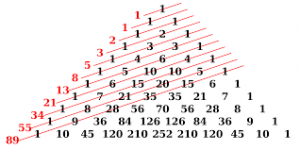Noticing patterns of nature is that hard. Although deriving the most fun needs an open mind, and nearly childlike questioning and imagination. For instance, the ubiquitous nasturtium that is popular in our fields. This plant is so charming and yet we normally take it just for granted. For the case of the nasturtium leaf, If you can be so keen, you will notice it resembles a wheel with the uplifted leaf veins portraying the spokes spreading from the midpoint. It displays a unified and solid structure. More so, the interplay for the light can form other patterns, stressing arrangements and other complexities within the leaf appending extra definition to the nuances and subtleties held therein.
A comparable pattern can be observed in a single rose too. For a while, the rose has been known as a symbol of simplicity as well as one of our most cherished and pretty flowers. The pattern appears as the petals spread outwards from the central point and one is nearly drawn into its brilliant depths. With this capability, it is little surprise it is the flower of love.
Usually, natural things comprise patterns in other patterns that are only exhibited by examining further and further into the matter. Certainly, nature is so charitable and just so pleased to embrace us in to realize all her beauty. You can be guaranteed that she will let the very dearest of examinations and will not mislead.
The patterns are not just limited to small stuff but are also manifested in the huge spectacular views and as well it is the sense to actually notice that is all that is needed. The contrast between light and dark, harsh and soft or irregular and straight are all the sequences that exhibit patterns. It is easy to discover patterns in nature by only separating section of a larger scene. For instance, a secluded part of the mountainside enhanced by the golden flames of a one autumn tree can give a very simplistic and usually starkly exciting pattern. Another alternative can be the randomly dropped leaves that grace the woodland floor forming a complex pattern and on the other hand golden shafts of sunshine filter through the wooden canopy overhead heighten their picture.
There are quite a number of patterns within the world’s fauna too. For example, the zebra or giraffe definitely manifest very impressive patterns. In this case, they are [patterns with the aim of defense and camouflage. Another good example can also be noticed in a simple feather. It shows amazing linear patterns with the shaft, barbecues and barb and their interlinking hooks coupling together to give both flexibility and strength. In particular, the feathers of the so-rejected magpie have a shimmering sheen and gives an excellent color to intensify the intense diagonal pattern.
Even though the decorations of nature may repeat, the reflections and colors alternate dramatically with the varying light, weather conditions and time of the day. Thus, even a vacation to the same area will evermore render something unique and fresh to view and challenge the mind.
Thanks to guttersrichmondva.com their support!



